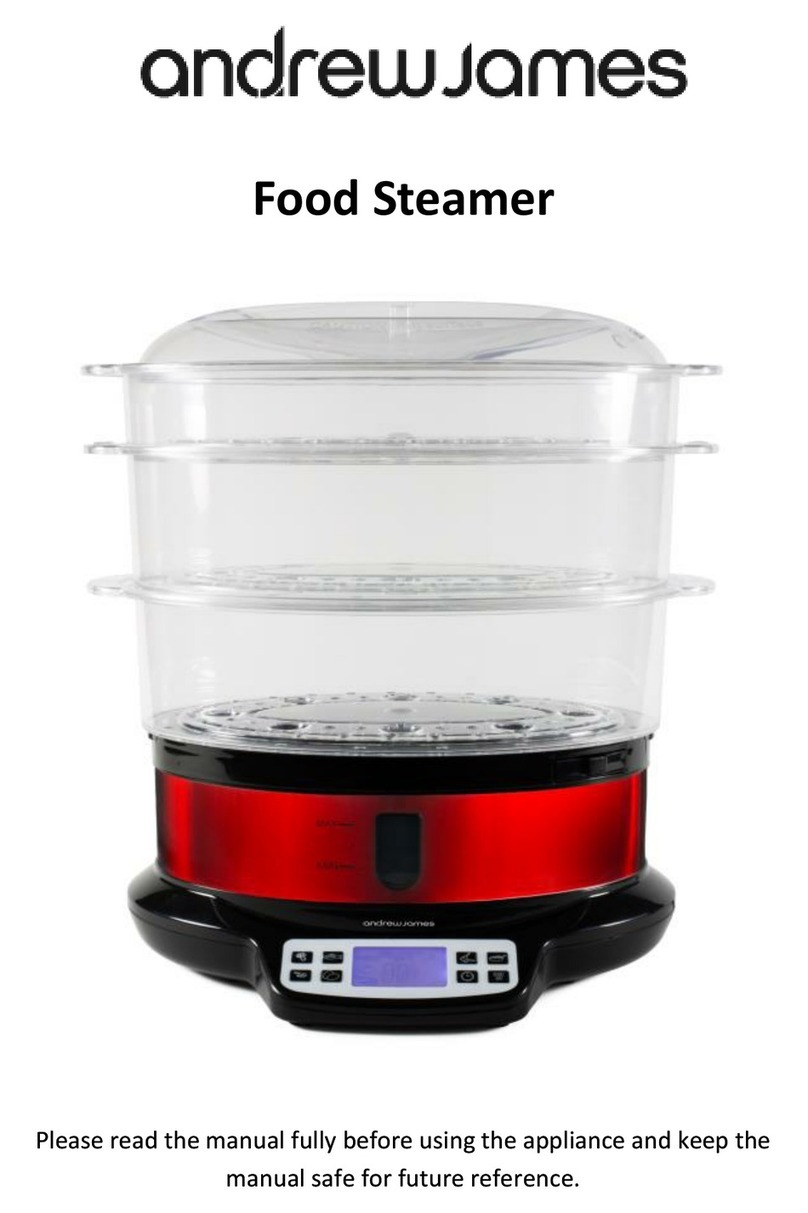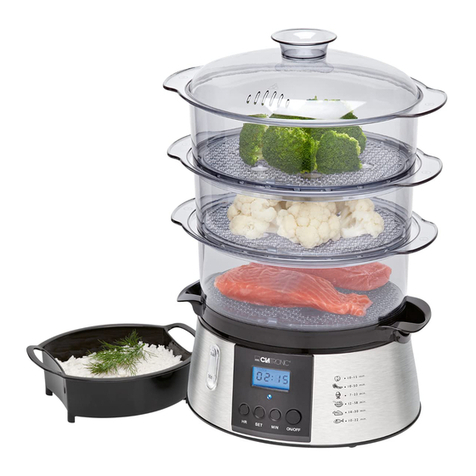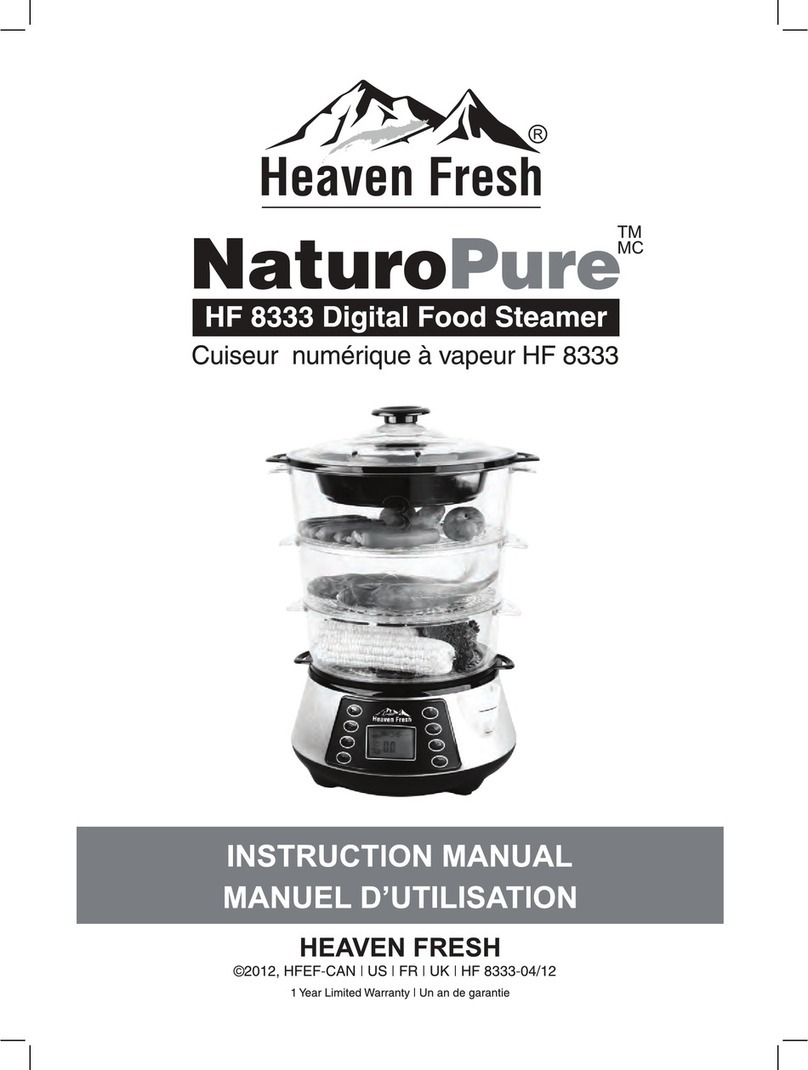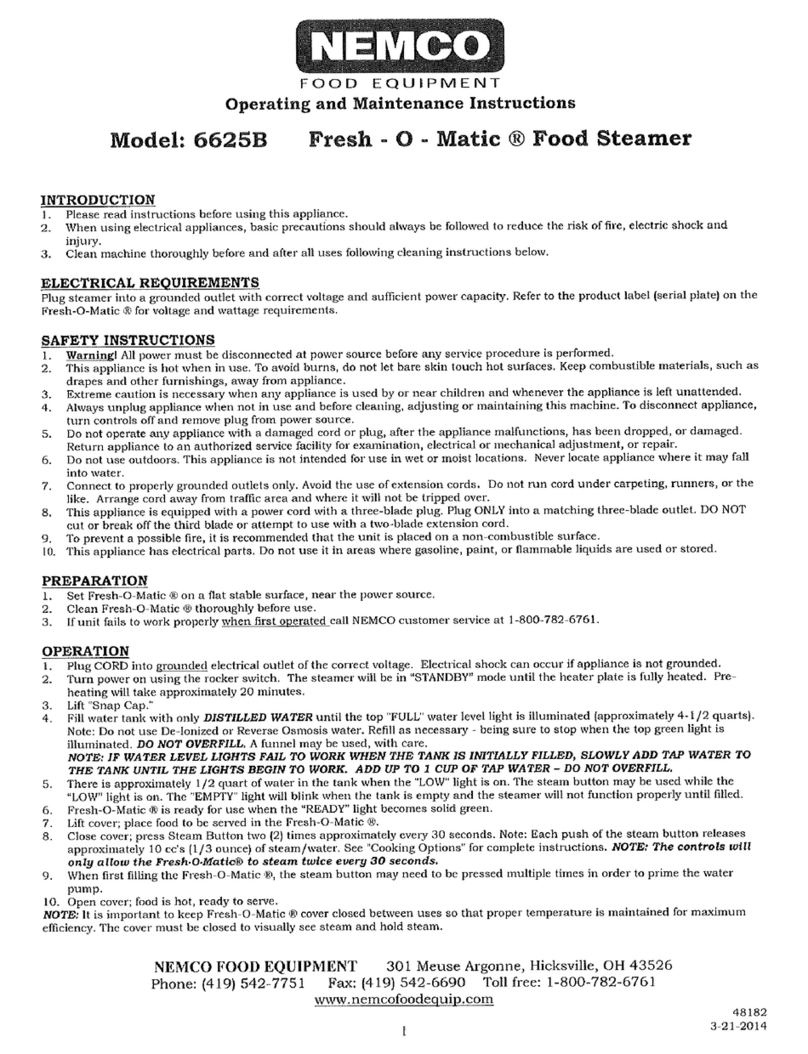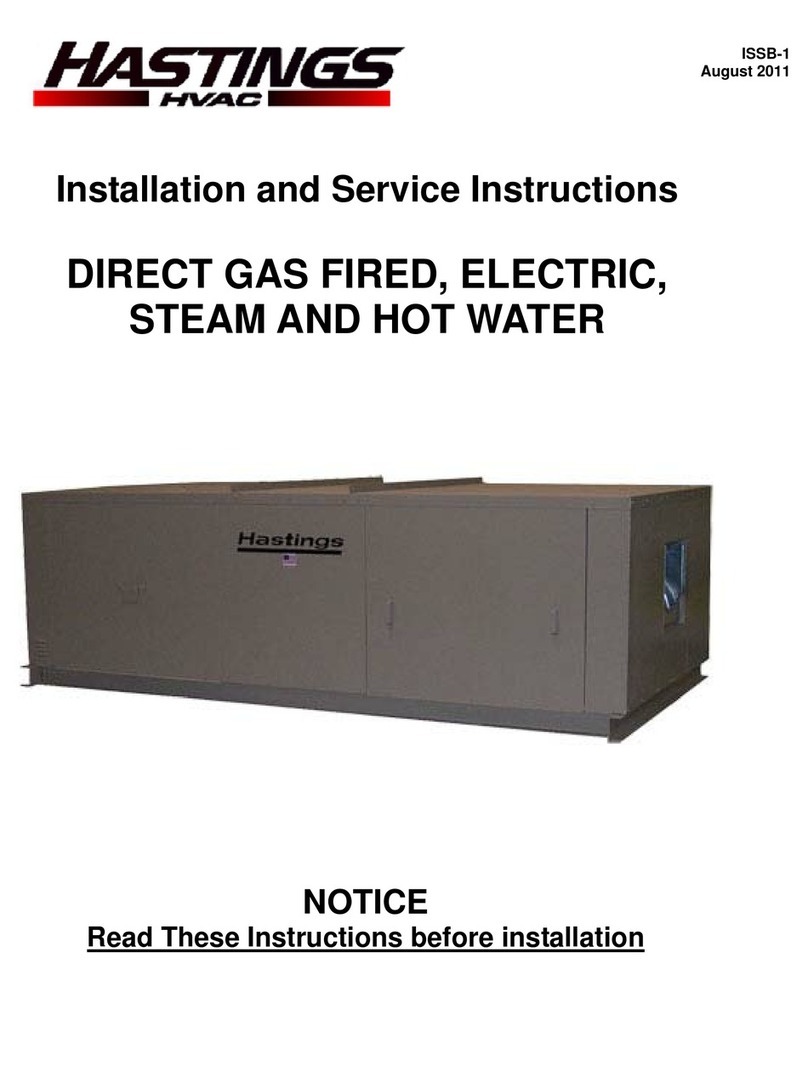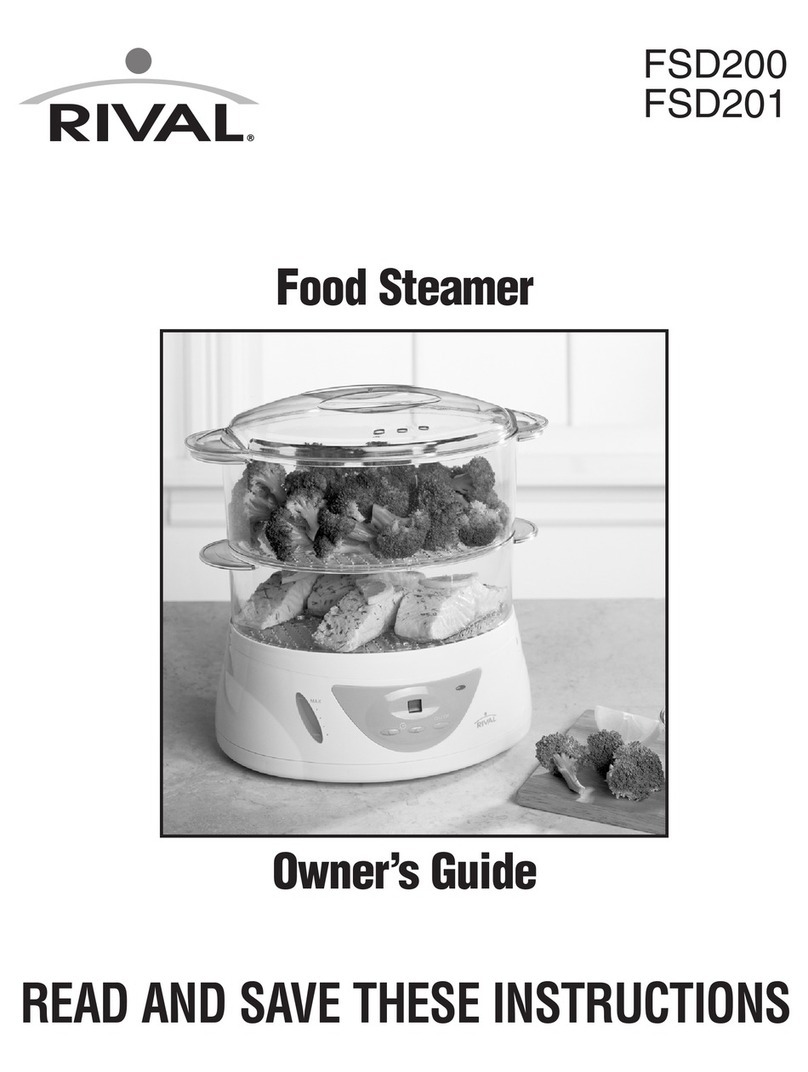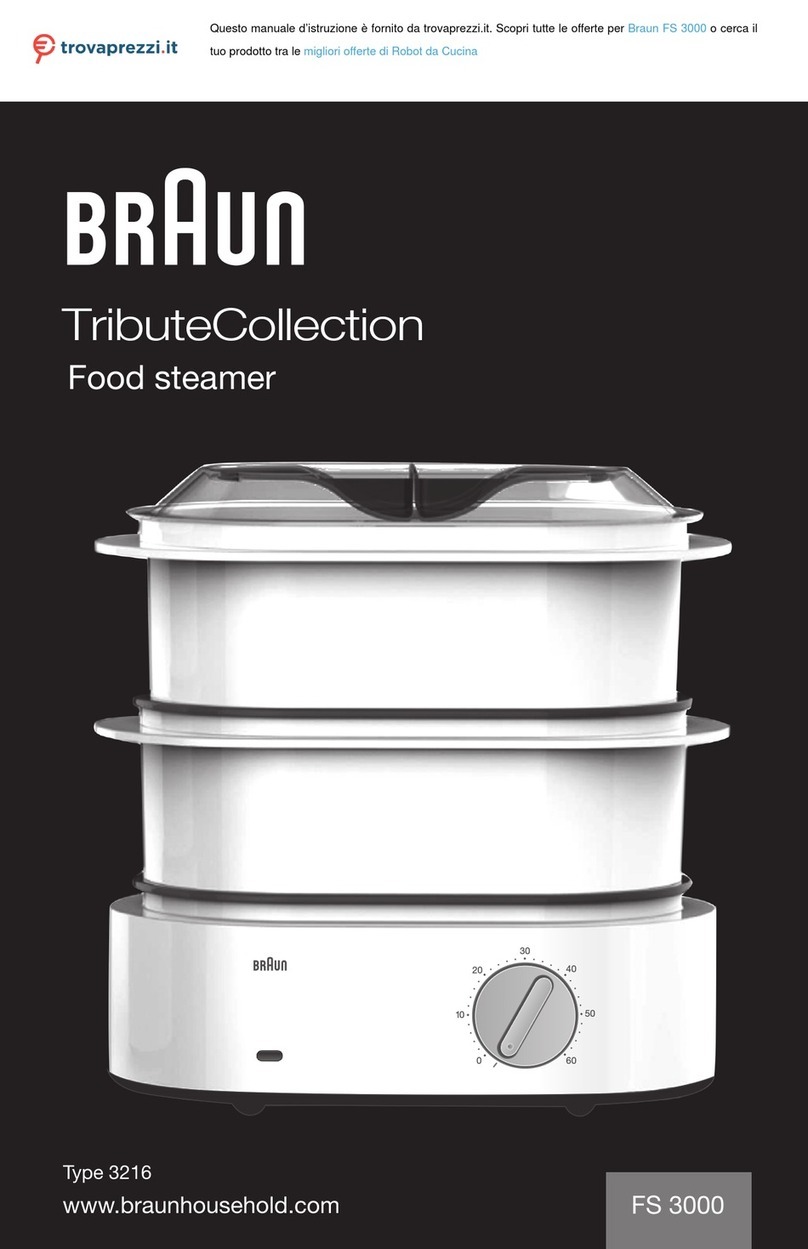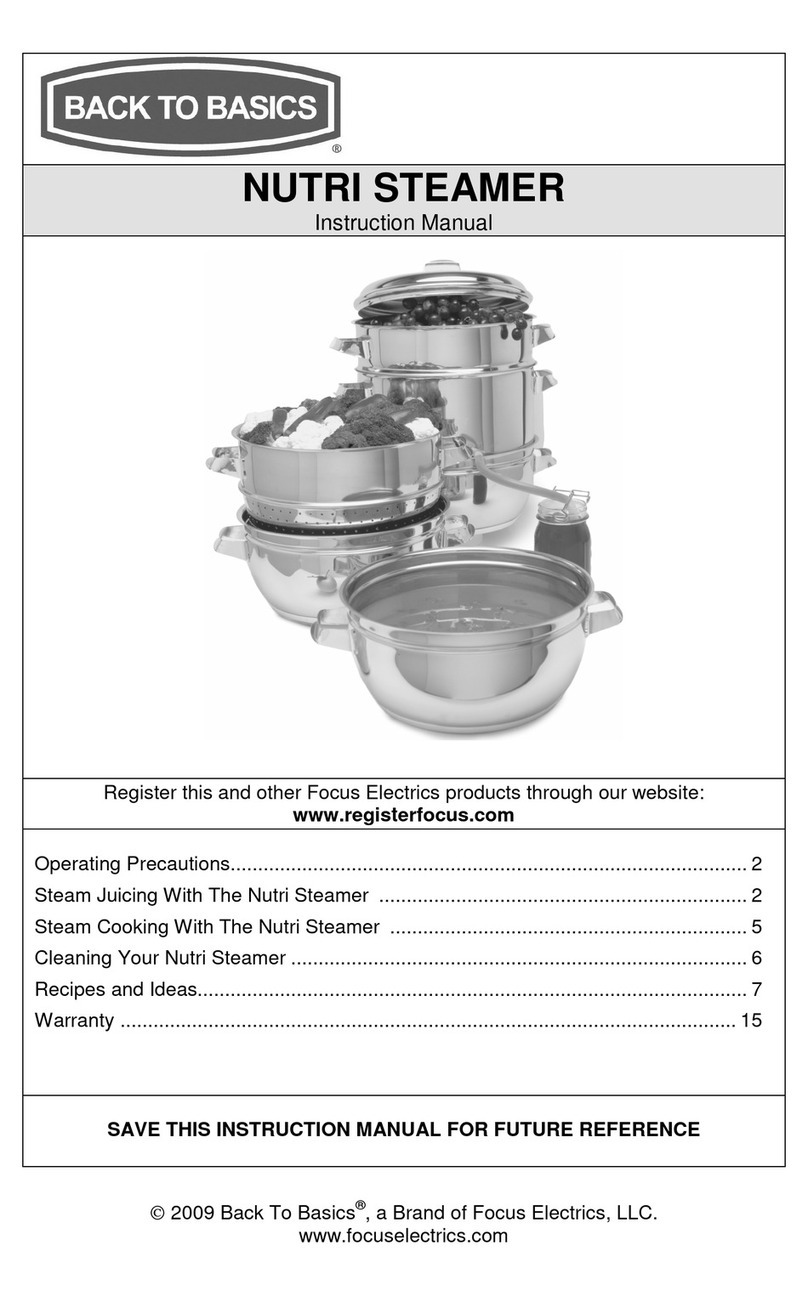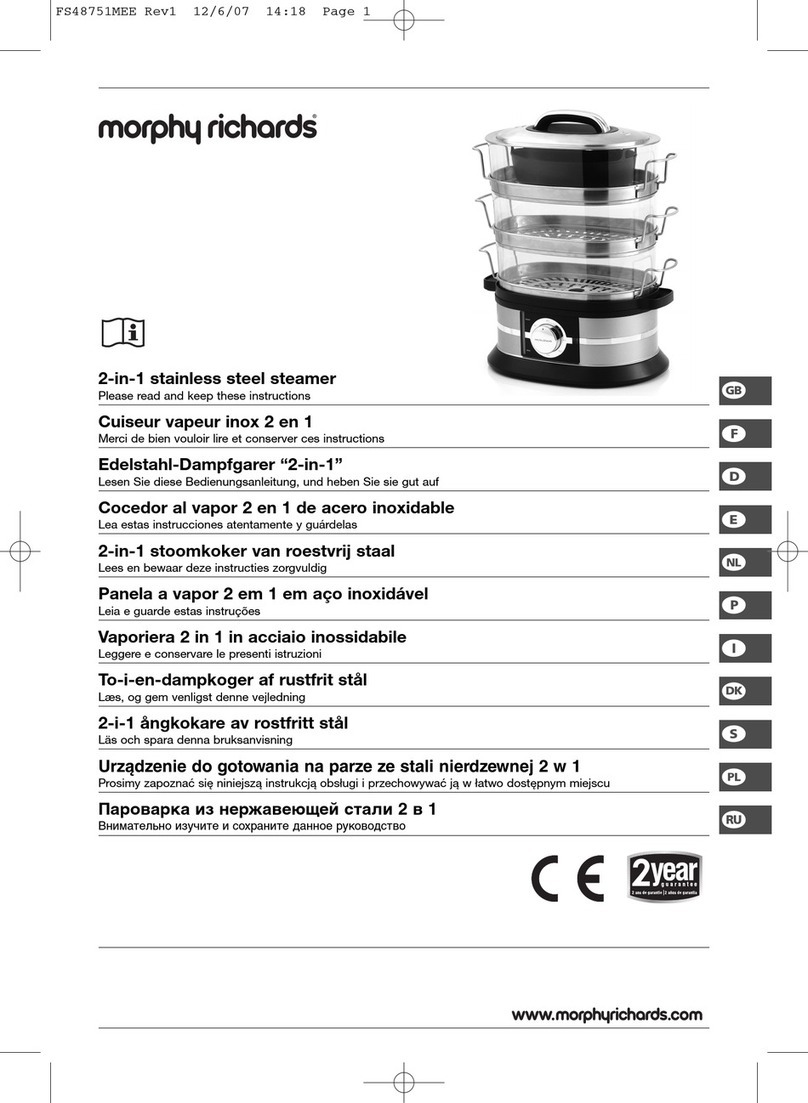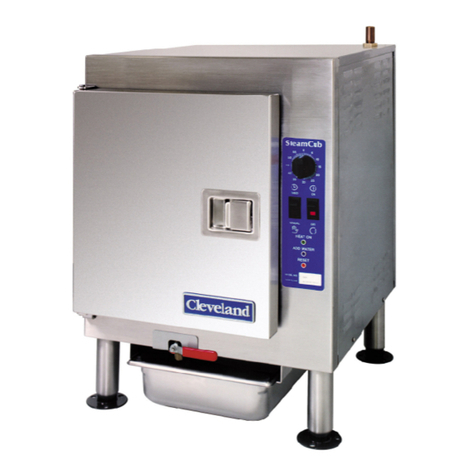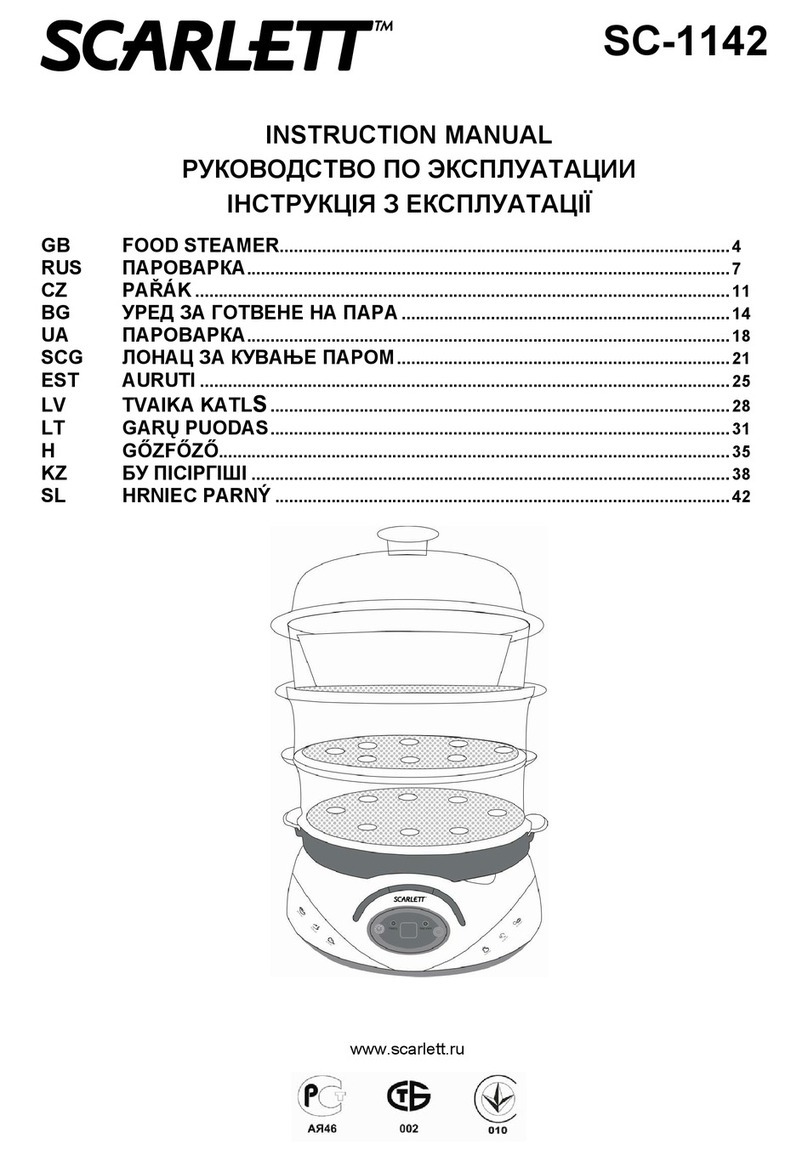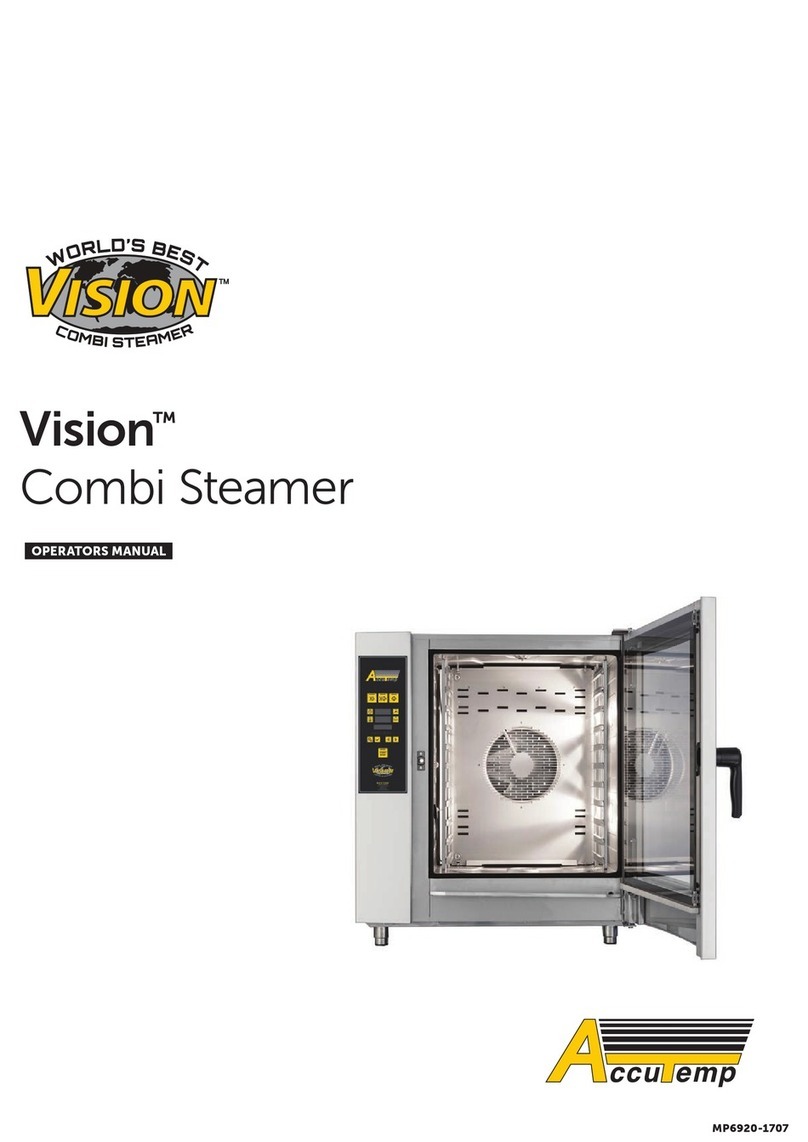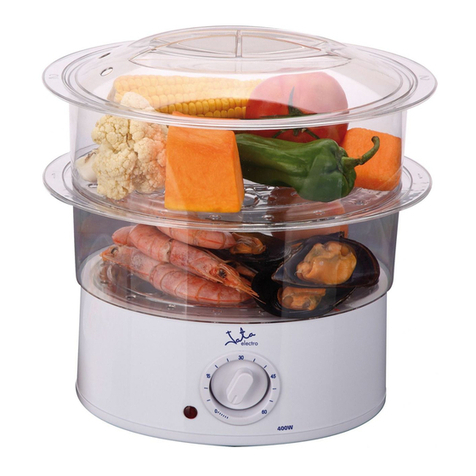-9-
WEIGHT OR APPROX. TIME
VARIETY NUMBER OF PIECES (MINUTES)
Artichokes, Whole 4 whole, tops trimmed 33 – 35
Asparagus, Spears 1 pound 13 – 17
Beans,
Green/Wax 1/2 pound 13 – 17
Cut or Whole 1 pound 15 – 19
Beets 1 pound, cut 28 – 31
Broccoli, Spears 1 pound 13 – 17
Brussels Sprouts 1 pound 18 – 21
Cabbage 1 pound, sliced 19 – 21
Celery 1/2 pound, thinly sliced 17 – 19
Carrots 1 pound, thinly sliced 13 – 17
Cauliflower, Whole 1 pound 13 – 17
Corn on the Cob 3 – 5 ears 28 – 33
Eggplant 1 pound 19 – 21
Mushrooms, Whole 1 pound 28 – 33
Okra 1 pound 21 – 23
Onions 1/2 pound, thinly sliced 15 – 17
Parsnips 1/2 pound 13 – 17
Peas 1 pound shelled 15 – 16
Peppers, Whole Up to 4 medium (not stuffed) 15 – 16
Potatoes, Whole – Red 1 pound, about 6 small 38 – 48
Rutabaga 1 medium, diced 31 – 33
Spinach 1/2 pound 17 – 19
Squash
Summer Yellow and Zucchini 1 pound, sliced 15 – 17
Winter Acorn and Butternut 1 pound 25 – 27
Turnips 1 pound, sliced 23 – 25
All Frozen Vegetables 10 ounces 31 – 53
NOTE: times are for reference. Experiment with adjusting steam times
to achieve your desired results.
